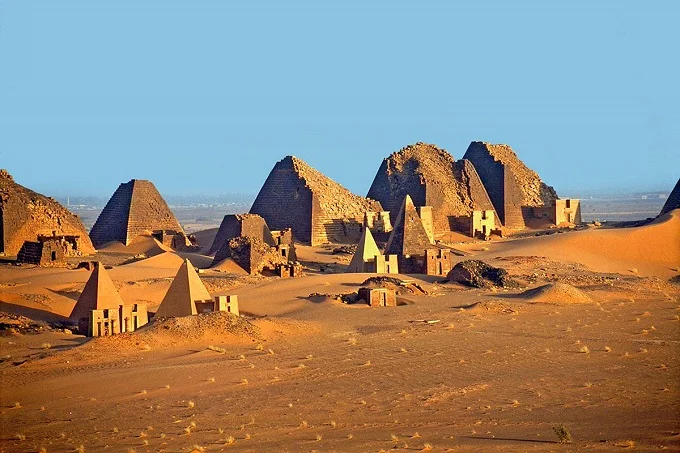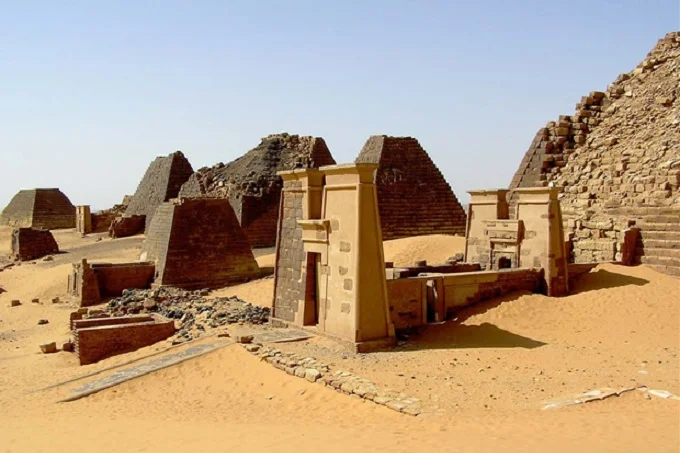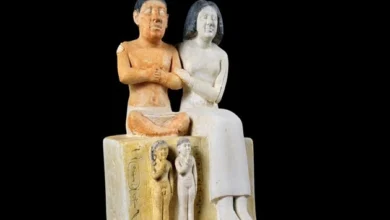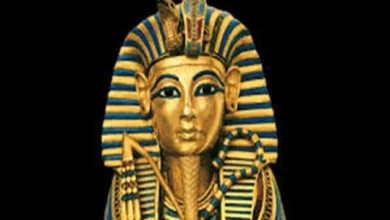Meroe pyramids or political structure: What was Meroe known for?

Following the fall of the 24th Egyptian dynasty about 1000 BC, the Nubian kingdom of Kush arose as the dominant force in the Middle Nile area. The Kushite rulers invaded and reigned over much of Egypt from 712 and 657 BC.
The kingdom’s capital and royal burial sites were transferred south from Napata to the Meroe area, which is between the 5th and 6th cataracts of the Nile, about 300 BC. Meroe is strategically placed at the crossroads of river and caravan routes that link Central Africa to Egypt, the Red Sea, and the Ethiopian Highlands through the Blue and White Niles.
There is a scarcity of historical knowledge regarding the Kushite dynasty and Meroe. It becomes hard to comprehend the official inscriptions of the Kushin queens and their scribes about one century BC when they ceased writing in Egyptian and started using their own script.

The legacy of dynastic Egypt’s pharaohs was carried on by monarchs in Meroe, who created steles to chronicle their reigns’ accomplishments and pyramids to house their tombs. Meroe’s political succession was not always hereditary; the most deserving member of the matriarchal royal line was often crowned king.
The Queen Mother’s position in the succession process was crucial to a seamless transition. The throne seems to have passed from brother to brother (or sister) and then from father to son when there were no brothers or sisters remaining. Meroe’s massive remains of pyramids, temples, and palaces point to a well-coordinated governmental structure that enlisted the help of huge numbers of laborers, architects, and artists.
Meroe ruled the territory from the third cataracts of the Nile in the north to Sawba, near present-day Khartoum, in the south, during the height of his power in the second and third centuries BC. The “Isle of Meroe” was named after this place, which served as the capital of the late Kushite monarchy.
Meroe social structure
Meroe’s monarchs lived at the same time as Egypt’s Ptolemies and the Romans. They had close connections with the Ptolemies in the third century BC when the rulers of the two adjacent Nile nations worked on the rebuilding of Lower Nubia’s temples, which were holy to Kush and Egypt.

Ptolemaic explorers and ambassadors also traversed the Nile, and some may have gone to Meroe to haggle with the Kushite monarch over the price of the war elephants they wanted for Egypt’s forces. Meroe’s relationship with Egypt, on the other hand, was not always pleasant. In reaction to Meroe’s military progress into Upper Egypt in 23 BC, a large Roman army went south and destroyed Napata, the Kushite kingdom’s holy capital.
The Romans enslaved the locals before abandoning the region, believing it to be too impoverished for sustainable settlement. Following the development of the Abyssinian empire of Aksum, the Kushite monarchy finally collapsed into disarray (in present-day Ethiopia).
The Aksumite army conquered and destroyed Meroe in 350 ACE, putting an end to the kingdom’s autonomous existence.
The Kushite religion’s principal god was a divinity from the area. It is often related to the moon and is known as the Apedemak, probably the lion form of the Egyptian deity Amun.
Apedemark was often represented in temples as a man in armor with a lion’s head, standing or reclining on an elephant or throne, with weapons, prisoners, or lions and elephants. In several parts of the Kushite territory, large temples were constructed in his honor.
Meroe’s most famous relics are its pyramids, which housed the graves of over forty kings, queens, and other noteworthy figures. Meroe seems to have been controlled by both queens and kings after the 3rd century BC, based on the discovery of many enormous pyramid graves of queens and the ruins of structures carrying only their own names.

The paintings preserved in the graves demonstrate that the kings were either burnt, mummified (or not), and then covered with jewels and packed in wooden boxes, despite the fact that all of these royal tombs were robbed in ancient times. Other people’s bones, as well as animals, have been discovered in several royal and affluent graves.
These linked graves point to a belief, similar to that of dynasty Egypt, that the departed would need and enjoy the same items in the afterlife as they did in life.
The pyramids were also harmed by the 19th-century Italian explorer Giuseppe Ferlini, who damaged the tops of over forty pyramids in his pursuit of wealth. Only one pyramid yielded gold, and Ferlini’s plundered antiquities were ultimately sold to European museums.

According to modern archaeological studies, weapons, wooden furniture, ceramics, stained glass windows, and silver and bronze items, many of which are of Egyptian, Greek, and Roman provenance, have been discovered in some of the big burials. Meroe is now Sudan’s greatest archaeological site. The area covers a square mile with the city’s ruins, which are about half a mile from the Nile.




